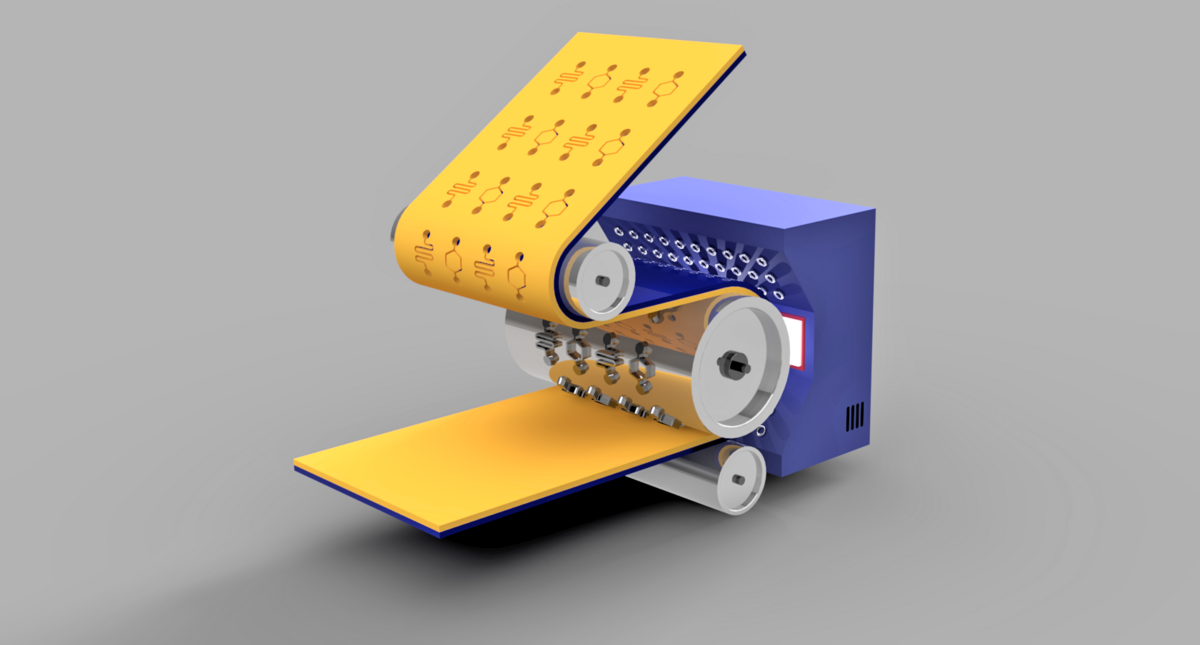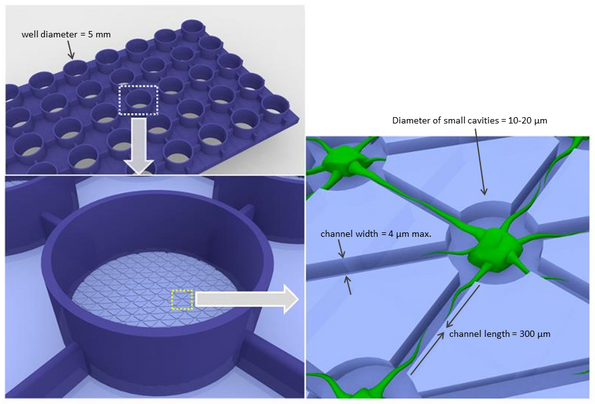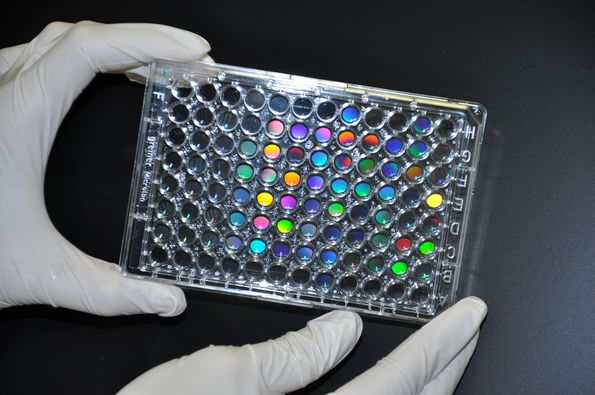Large scale micro- and nano-fabrication technologies for bioanalytical devices based on Roll-to-Roll (R2R) imprinting
Driven by global trends that are increasingly favoring personalized medicine and Point-of-Care testing, a steadily increasing demand exists for miniaturized analytical systems. At the same time, the use of cell-based assays is gaining more importance, due to efforts to reduce the costs of drug development and the number of animal experiments. The adoption of such bioanalytical systems by industry and their eventual commercial success will be greatly dependent on the implementation of new, cost-efficient production technologies.

Schematic of roll-to-roll based nanoimprinting
Fabrication of bioanalytical microfluidic lab-on-chip devices by roll-to-roll (R2R) nanoimprinting
The R2R Biofluidics project addresses the above mentioned challenges by:
- Development of microfluidic systems to enable precise assays and rapid, cost-efficient analysis
- Application of R2R technologies to enable high-volume manufacturing of low-cost polymer consumables for lab-on-a-chip devices.
A roll-to-roll platform is an industrially vetted way for high-volume manufacturing. From the technical point of view, R2R nanoimprint lithography (NIL) has proven to maintain the high-resolution pattern fidelity benefit from the traditional NIL technique with a drastically increased throughput.
The main approach of R2R Biofluidics is to use roll-to-roll pilot lines for highly cost-efficient, high throughput fabrication of micro- and nanostructured bioanalytical devices.
While two types of demonstrators will show the potential of our approach within this project, the technology is applicable to multiple other applications.
Demonstrator 1 represents an in-vitro diagnostic chip suitable for point-of-care applications with improved sensitivity owing to imprinted nanoscale optical outcoupling structures and microfluidic channels. R2R fabrication will further greatly reduce production costs and increase manufacturing capacity with respect to currently used products.

Schematic illustration of neuron growth in patterned culture devices

photo of patterned micro titer plate
Demonstrator 2 provides a device for improved neuron-based high-throughput screening assays in drug development. It will consist of nano– to microstructured, interconnected channels in combination with dedicated biofunctionalized surfaces for alignment and controlled growth of neurons.
Advantages of Roll-to-Roll Nanoimprinting:
- Production-readiness:
R2R processes are mature core processes in manufacturing lines for, e.g., the graphical printing industry.
- Cost-reduction:
R2R techniques notably lower the unit prices of flexible devices.
- Increase in productivity:
Roller-based nanoimprinting methods enable unrivalled throughput and productivity for precise fabrication of micro- and nanoscale patterns.
- Flexibility:
R2R imprinting is suitable for microfluidics and lab-on-a-chip products for diagnostics, drug discovery and food control.
- Microfluidic simulation
- Design and layout of your lab-on-a-chip, lab-on-foil, in-vitro diagnostic chips, etc.
- Mastering of small-scale nanometer and micrometer structured stamps
- Master upscaling to large area shims and roller-based reproduction
- Material development well-adapted to your applications
- Customized surface modification and bio functionalization
- Tailored R2R production lines for your product
- Customized contract manufacturing on existing pilot lines
- Process development services
